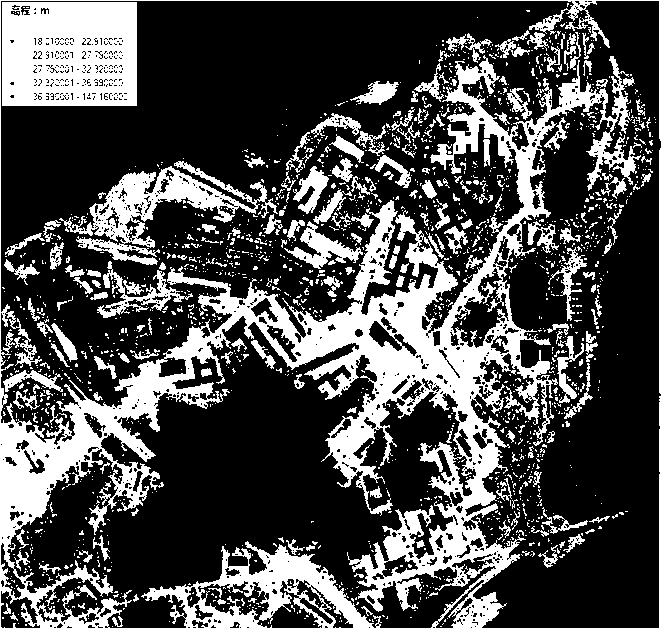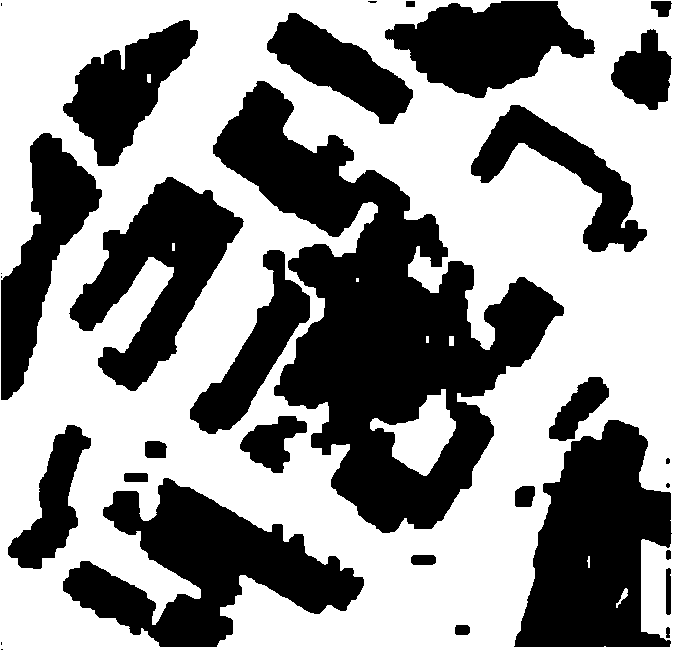Building area extraction method based on LiDAR data
A building and data technology, applied in the field of extracting buildings from LiDAR data, to achieve high extraction accuracy, avoiding information loss, and reliable data support.
- Summary
- Abstract
- Description
- Claims
- Application Information
AI Technical Summary
Problems solved by technology
Method used
Image
Examples
Embodiment 1
[0050] The method proposed by the present invention adopts Visual Studio 2008 development platform C# language programming to realize, and the LiDAR data to be processed is point-shaped data, selects and adopts open-source geographic data format conversion class library OGR to finish reading and writing and other processing to point cloud data here operate.
[0051] Refer to the four technical steps of the technical plan and figure 1 The reverse iterative mathematical morphology filtering method is shown in the technical flow chart to complete the extraction of building points. The specific processing steps are as follows:
[0052] Step 1: Pre-processing of LiDAR data
[0053] The present invention uses large-scale LiDAR data to carry out reverse iterative segmentation experiments. The experimental area is about 2000m×2000m, and the original LiDAR data is as follows: figure 2 As shown (colored by elevation), the average point spacing is about 1m, the elevation accuracy is a...
PUM
 Login to View More
Login to View More Abstract
Description
Claims
Application Information
 Login to View More
Login to View More - R&D
- Intellectual Property
- Life Sciences
- Materials
- Tech Scout
- Unparalleled Data Quality
- Higher Quality Content
- 60% Fewer Hallucinations
Browse by: Latest US Patents, China's latest patents, Technical Efficacy Thesaurus, Application Domain, Technology Topic, Popular Technical Reports.
© 2025 PatSnap. All rights reserved.Legal|Privacy policy|Modern Slavery Act Transparency Statement|Sitemap|About US| Contact US: help@patsnap.com



